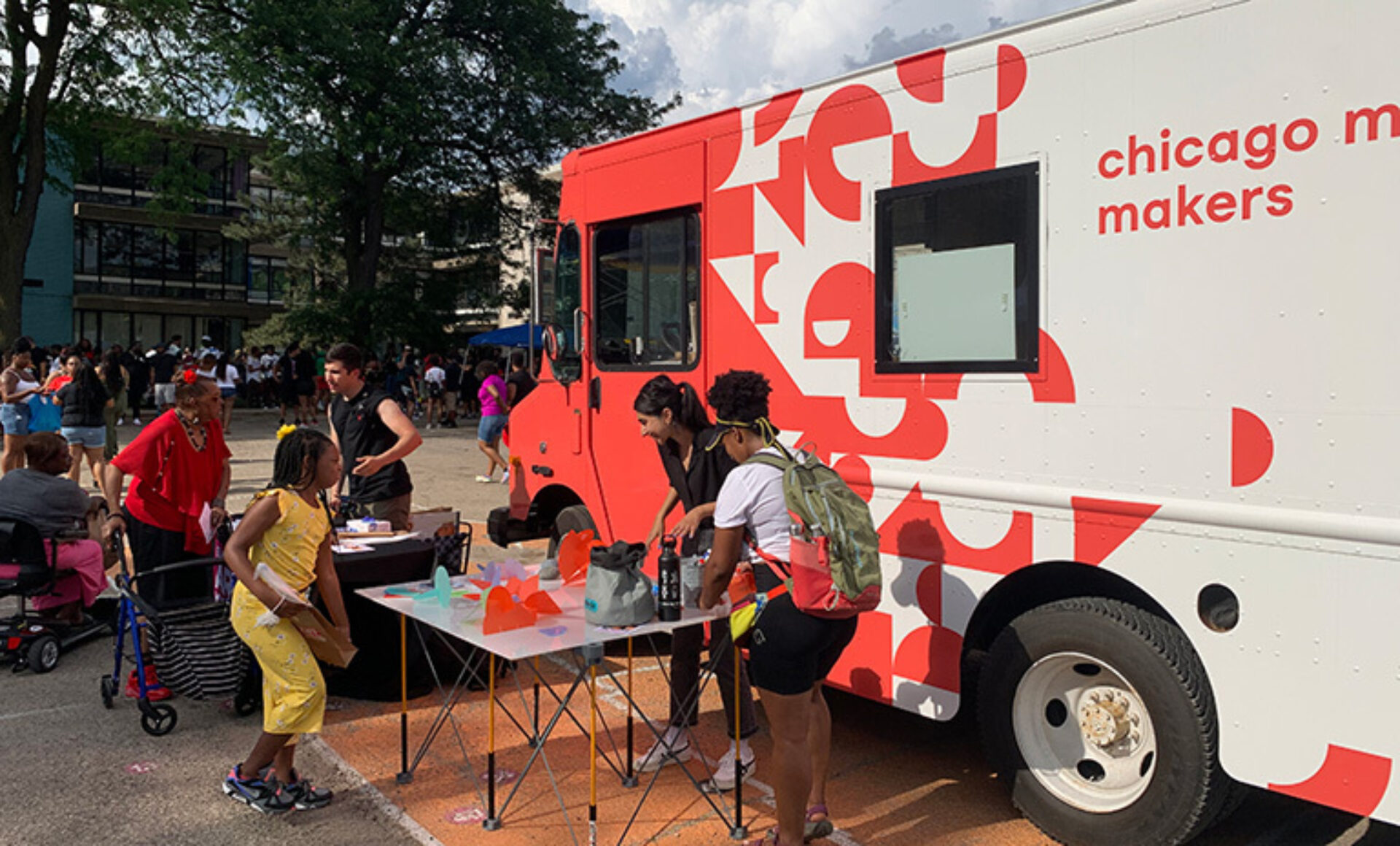This article originally appeared in the September/October Issue of interiors + sources magazine
“Representation can be all it takes to believe in yourself,” says Naomi Mekonnen, an interior design student at Indiana University. She discovered her passion for design through IIDA’s Design Your World (DYW), a summer program exposing high schoolers to the possibilities of a design career. After participating in the inaugural 2021 Chicago cohort and later returning as a teaching assistant, Mekonnen led a conversation with fellow alumni: Sajid Muhammad, an architecture major at Hampton University who joined DYW in Miami in 2022 and 2023, and Maline Jackson-Austell, a software engineering student at St. Louis Community College who participated in St. Louis in 2023. Together, they reflect on how DYW offered fresh perspectives, dismantled misconceptions, fostered a sense of belonging, and gave them the confidence to pursue their passions.
Edited excerpts from the conversation below.
Naomi Mekonnen: What brought you to DYW, and how did it change your perspective?
Maline Jackson-Austell: I’ve always been interested in architecture and interior design because they influence how people interact with spaces—they impact mood and behavior. DYW deepened my connection to the field by showing me I wasn’t alone in my passion—others felt the same way about design, which was really reassuring.
NM: I totally agree! I’ve always been an artsy kid, and growing up in Chicago, I’ve been fascinated by architecture. I was always interested in interior design, but I didn’t think it was a real career—I thought it was just picking paint swatches and matching couches and pillows to the walls. DYW opened my eyes to how important interior design really is—it’s not just decorating; it’s about creating functional spaces where people live and interact. In a way, it’s like creating a home, even if it’s not someone’s actual house. It could be a school or that little corner under the stairs...All those little things matter.

Sajid Muhammad: At first, I was focused on architecture and didn’t realize how broad the field was. DYW opened my mind; now I see how interconnected everything is—architecture, design, and interiors.
NM: Same here. The program helped me grasp the basics of interior design, so when I got to school, much of the information felt familiar. What part of DYW had the biggest impact on you?
MJA: For me, it was learning to mix colors, textures, and materials. It made me more experimental. I used to be more into monochrome, but understanding textures and patterns changed how I envision spaces.
SM: Creating mood boards was a big eye-opener for me. It helped me visualize how different elements work together. It also taught me how to be more adventurous with design.
NM: I’m the opposite—I’ve always been a really colorful person. The biggest lesson for me was color theory; it opened my eyes to less colorful things. I used to think, “Oh, plain white walls are bland,” but I learned to appreciate the balance between using colors and other elements. You can use subtle touches to elevate a space without overpowering it. Not everything has to be colorful. Another thing I found is that design is all about teamwork.
MJA: That was huge for me. Working with professionals and getting their feedback gave me a new perspective and helped me understand design on a more technical level. I realized that successful design often lies in collaboration—bringing together diverse perspectives to create something cohesive and complete.
SM: Working with my team taught me the importance of compromise. Finding a middle ground was essential. It’s been really helpful now that I’m in school, constantly collaborating on projects. I’ve learned how to listen and incorporate different viewpoints.

NM: You’re never working alone; you’re never just one person working on one project. Learning to be flexible in a team setting is something I really value now; it helped me grow as a designer and made me more open-minded, especially going into college. That’s the biggest piece of advice I would give to high school students thinking about joining DYW: collaborate.
MJA: Definitely! Come in with an open mind and don’t be afraid to speak up and share your ideas—there’s no judgment, and every idea matters. The more you participate, the more you’ll grow. Also, make connections with people. Be their friend. It’s easier to work with people when you know them.
NM: Most high school students don’t yet understand the importance of networking, but building that network early can really pay off. Those connections might become your future colleagues. For example, someone from the program might become a sales rep, and as a designer, you could reach out to them for product recommendations.
Interior design is very much a word-of-mouth career. Sure, there are job listings, but face-to-face interactions matter so much more. Even if you’re not sure about pursuing interior design, it’s still worth making connections.
SM: I was lucky enough to build a network through IIDA, which led to me being invited to speak at an IIDA event. That event turned into a major networking opportunity. You have to be willing to put yourself out there, test the waters, and you never know who you’ll connect with.
NM: I really see programs like DYW changing the design industry, especially in terms of diversity and representation.

MJA: It’s incredibly helpful to expose young designers to the industry early, especially those who may not have had access to these opportunities before. Connecting people from diverse backgrounds is key to the future of design—it can really motivate you to push yourself and keep going.
SM: Exactly. Having instructors who look like you and understand your background encourages you to pursue your passion, knowing there’s a place for you in the industry.
NM: When I was in high school, I didn’t see much representation in interior design. I couldn’t picture myself in the field, let alone being successful in it. But when I joined DYW, and the program was taught by a woman of color, Ciera C. Payton, it really inspired me. Seeing someone who looked like me, thriving in the field, made all the difference.
The following year, I worked as a teaching assistant for the program with Kenzie Leon Perry. He was just amazing. Especially in Chicago where there’s such a huge resource gap, many students of color don’t get the same access to education and opportunities as those in nicer neighborhoods. Representation can be all it takes to believe in yourself. I knew I loved design, but I didn’t know if the field would love me back. That’s why feeling seen is so important.
SM: DYW really did a great job of that.







